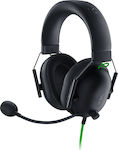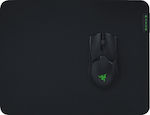Owner for several years of certain Oled TV models, so I roughly knew what to expect.
Positives:
Incredible Contrast as expected and blacks, and the most impressive for a Monitor is the Latency and Smoothness in fast motion.
The HDR is amazing in movies and in small points reaches 1000 Nits when we have HDR high in the menu.
Beautiful, very thin, and nice materials of construction, it also has a remote control that is convenient and charges via USB.
Awesome Tizen and fast, allowing you to watch Netflix, Disney, etc., without a PC, or play Cloud Nvidia games, etc., quite good speakers for their size.
Now let's go to...
Negatives:
The menu is complicated, it has 4 different Menus yes you heard right, it has a Tizen menu for TV, a Settings menu inside Tizen that opens another bar below, and then there is a different menu on the PC when you press the screen joystick and it has a different Menu in Game Mode bar below... I have never seen a worse Menu Ever...
Samsung warranty does not cover Burn in (they sent me an email).
There is intense Flicker (see Rtings Video) when VRR is ON (the screen menu has 2 VRR options, a Default On that shows in the menu and is the so-called G sync _ Free Sync and another GPU VRR that essentially fixes the FLICKER but unfortunately presents Stutter, so in short, the FLICKER cannot be avoided unless the FPS are locked, a stupid thing in my opinion.
The panel unfortunately has quite a few reflections as you can see in the photos, (when it is night there is no problem).
The panel when there is content with a black background and we have light on becomes PURPLE as you see in the photo, essentially there is no Antiglare Coating, in short, not the best for use with light.
Unfortunately, I can see in the letters what everyone was saying about qd oled fringing, (inside games, movies, etc., there is no problem) but when you write it stands out, especially if you have it next to an IPS panel that I see every day. Simply those who have QD oled now get used to it (just as they get used to the unacceptable black and those who had IPS and then go to OLED).
Very Low Brightness (the max is 50 in SDR) and barely goes to 230-240 Nits, compared to my IPS Panel which easily reaches 450, it is night and day, when the content is something that is Fullscreen Bright like watching Football, or some Sea etc., there the IPS is class superior in brightness, (not contrast).
The HDR in Windows when I turn it on is annoying even after Calibration, because I can see that the panel when I open and close windows changes brightness, When it is at 400 nits it is not so intense, but when it is at High 1,000 Nits it is very intense and annoying, so inside Windows SDR I just work at a steady 240 Nits regardless of what window I open.
Now something about Burn In, something about the fact that OLED Pixels lose Brightness over time, the Burn In protection that shifts the Image etc., okay I don't put them in negatives since we have them as given, sooner or later either 2 or 5 years there will be a problem with the panel it is given that no matter what you do.
Overall I am quite satisfied and it was what I expected, they didn't magically fix the problems that OLEDs have nor did IPS and VA magically become better, everything has its use.
And everything depends on the perspective you view them from; if you set the OLED to be at night with content that has a black background or HDR, it is logical that the IPS next to it will be considered trash by some. However, when you place a similarly priced IPS panel, like the Asus Pro Art, with daylight and content that is full screen bright, like a hockey or football match next to the OLED, then you will be disappointed with the OLED.
So, these QD OLEDs are a great purchase as long as we know what use we want them for. (I should mention that I saw a friend's Mini LED monitor up close, and unfortunately, the fan was very noisy as it had to cool the panel due to its tremendous brightness, but the worst part was the motion in games like CS, PUBG. There was terrible blur and ghosting. The OLED is the only option for competitive games; it has no blur or ghosting at all.
Ps. SDR mode, Color Space set to Auto from Native, this way you have natural colors (although not as impressive as most people want).
Ps.2 I want to inform you that suddenly I was getting random vertical lines; it turned out to be the stock cable that comes with Samsung. I bought a Delock Mini DP to DP 8K 60hz verified cable, and now it works perfectly. With HDMI, which I also tested, it worked fine.




























































